Complete Solutions to Physics of chapter ELECTRIC CHARGE AND FIELDS of Class 11 book with complete answers and questions
| Class 11 | PHYSICS |
| Chapter | ELECTRIC CHARGE AND FIELDS |
| DISHA | Physics |
| Number Of Questions | 42 |
| Academic Year | 2023-24 |
The surface charge density of a thin charged disc of radius R is `sigma`. The value of the electric field at the centre of the disc is `(sigma)/(2in_(o))`. With respect to the field at the centre, the electric field along the axis at a distance R from the centre of the disc reduces by
View SolutionA solid conducting sphere of radius `a` has a net positive charge `2Q`. A conducting spherical shell of inner radius `b` and outer radius `c` is concentric with the solid sphere and has a net charge `-Q`. The surface charge density on the inner and outer surfaces of the spherical shell will be
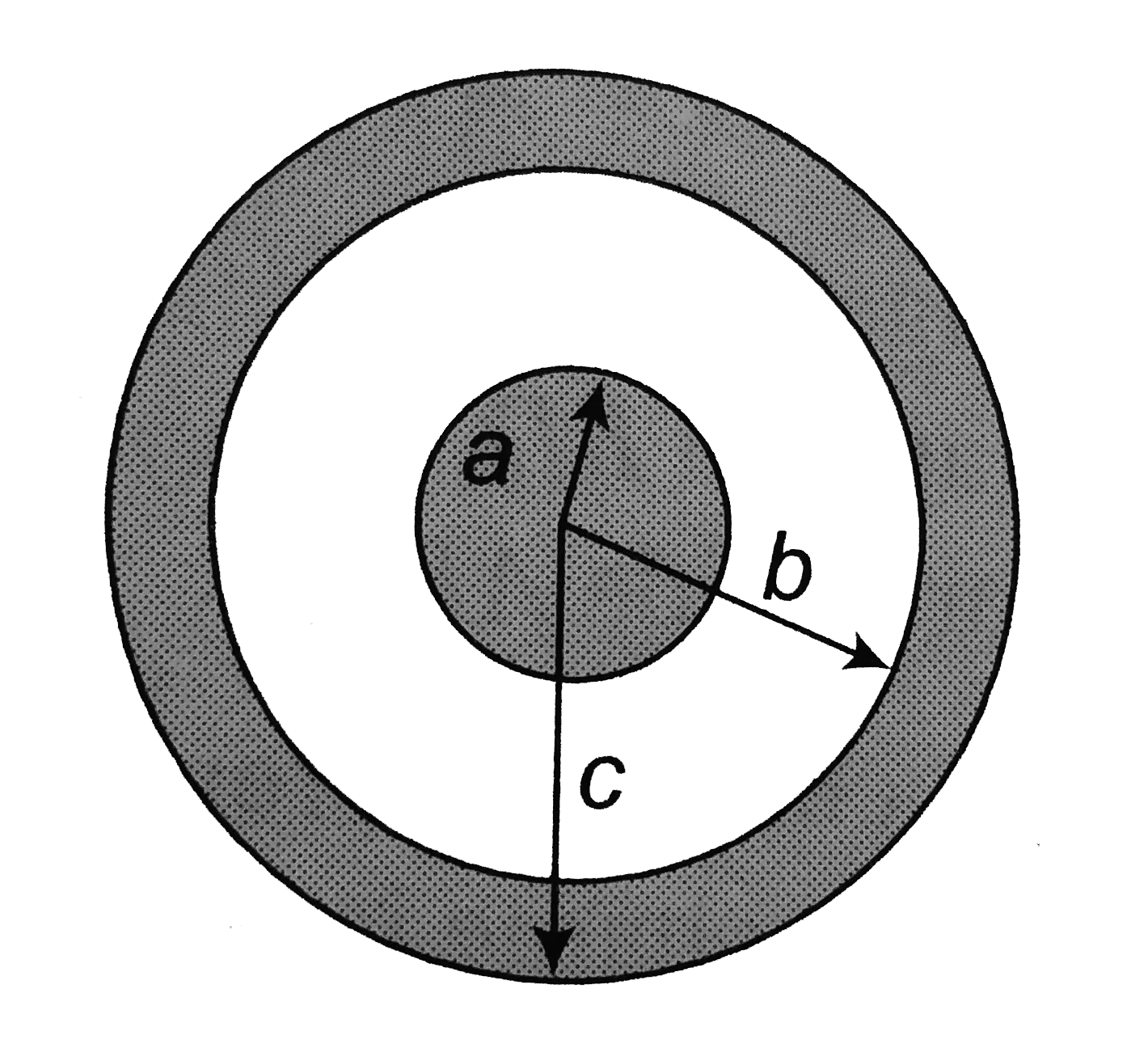
View SolutionTwo equally charged, indentical metal spheres `A` and `B` repel each other with a force `F"`. The spheres are kept fixed with a distance `r` between them. A third identical, but uncharged sphere `C` is brought in contact with `A` and The magnitude of the net electric force on `C` is
View SolutionIn the figure, the net electric flux through the area A is `phi=vecE.vecA` when the system is in air. On immersing the system in water the net electric flux through the area
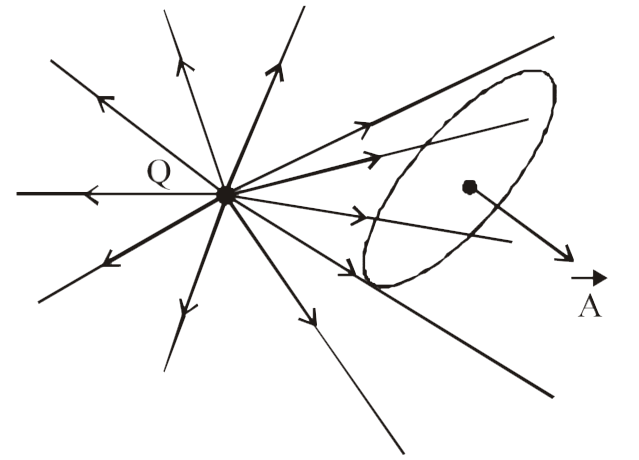
View Solution`ABC` is an equilateral triangle. Charges `+q` are placed at each corner. The electric intensity at `O` will be
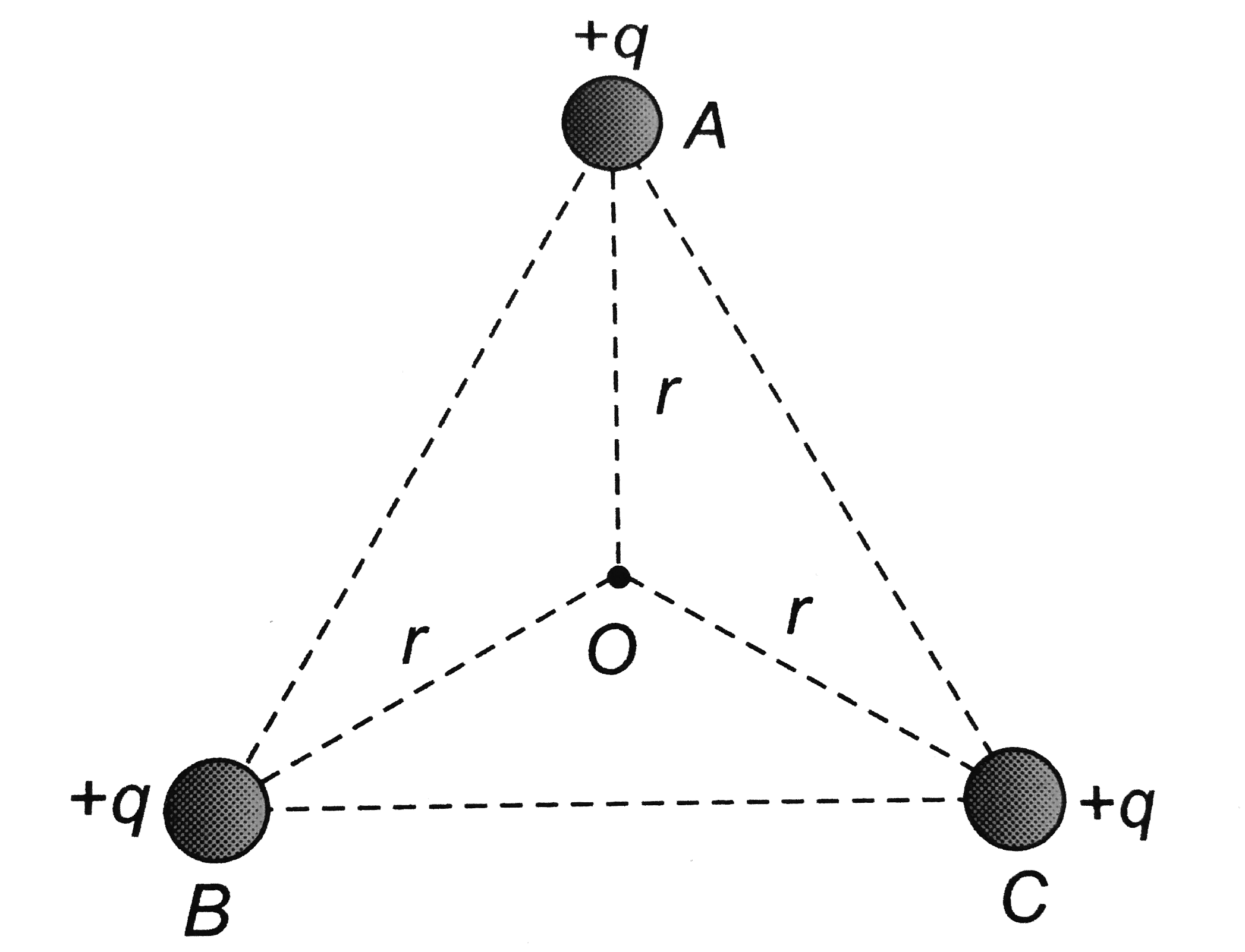
View SolutionAn electric dipole is placed in a uniform electric field. The dipole will experience
View SolutionAn uniform electric field E exists along positive x-axis. The work done in moving a charge 0.5 C through a distance 2 m along a direction making an angle `60^(@)` with x-axis is 10 J. Then the magnitude of electric field is
View SolutionWhich one of the following graphs represents the variation of electric field with distance r from the centre of a charged spherical conductor of radius R?
View SolutionA hollow cylinder has a charge `qC` within it. If `phi` is the electric flux in unit of voltmeter associated with the curved surface `B` the flux linked with the plance surface `A` in unit of voltmeter will be
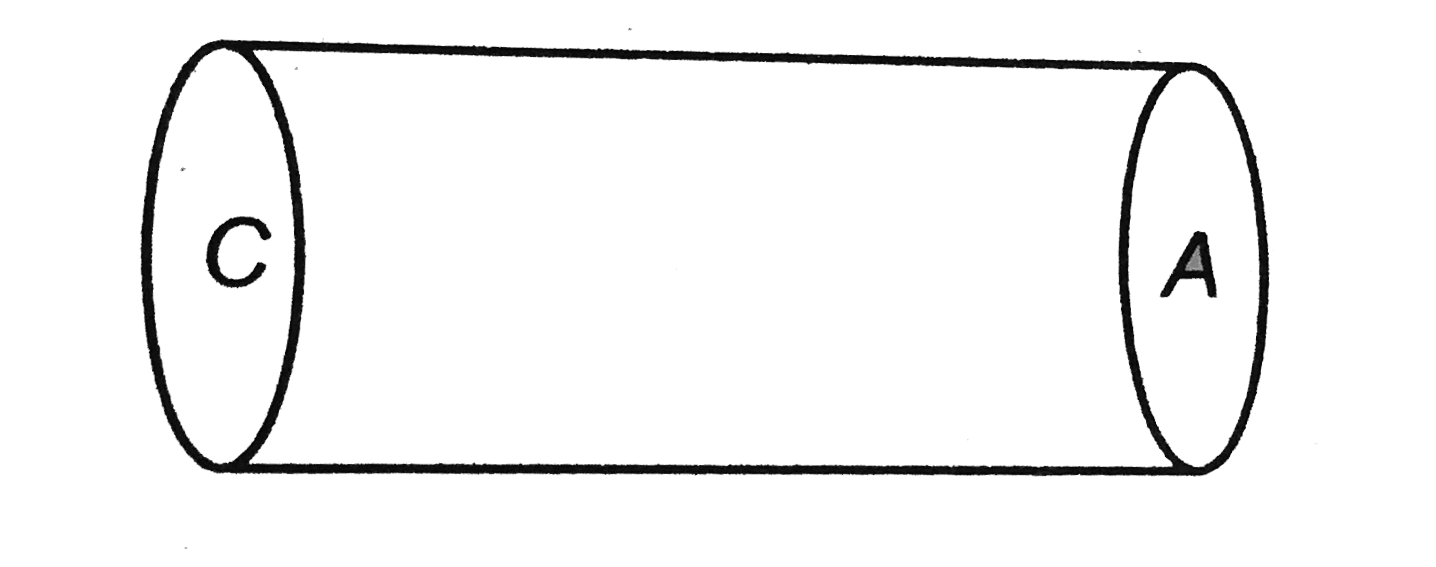
View SolutionIf `E_(a)` be the electric field strength of a short dipole at a point on its axial line and `E_(e)` that on the equatorial line at the same distance, then
View SolutionThree poistive charges of equal value q are placed at the vertices of an equilateral triangle. The resulting lines of force should be sketched as in
View SolutionThree point charges ` Q_(1), Q_(2), Q_(3)` in the order are placed equally spaced along a straight line. `Q_(2)` and` Q_(3)` are equal in magnitude but opposite in sign. If the net force on `Q_(3)` is zero. The value of `Q_(1)` is
View SolutionElectric charge is uniformly distributed along a along straight wire of radius `1 mm`. The charge per centimeter length of the wire is `Q` coulomb. Another cyclindrical surface of radius `50 cm` and length `1 m` symmetrically enclose the wire ask shown in figure. The total electric flux passing through the cyclindrical surface is
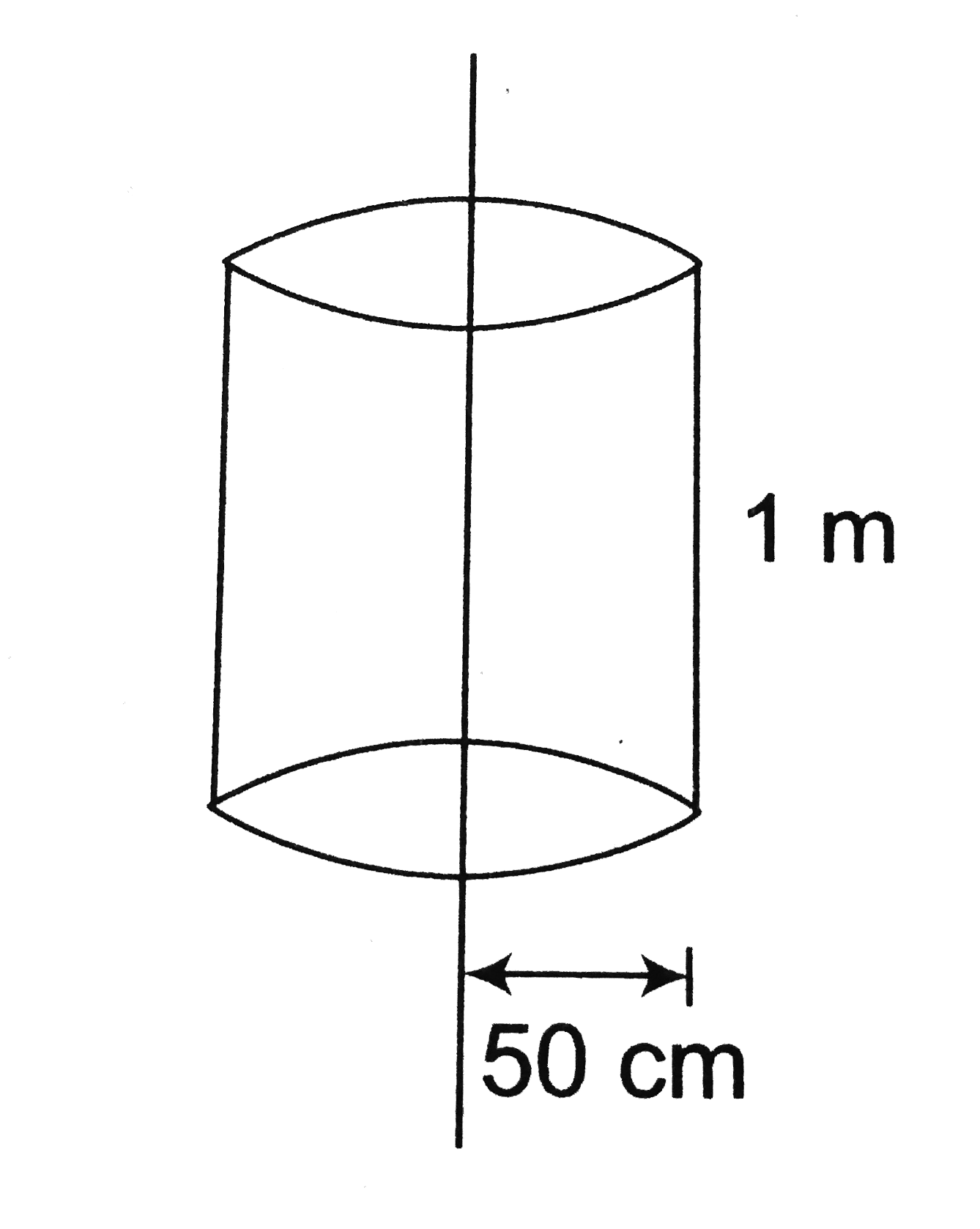
View SolutionA small sphere carrying a charge `q` is hanging in between two parallel plates by a string of length `L`. Time period of pendulum is `T_(0)`. When parallel plates are charged, the time period changes to `T`. The ratio `T//T_(0)` is equal to
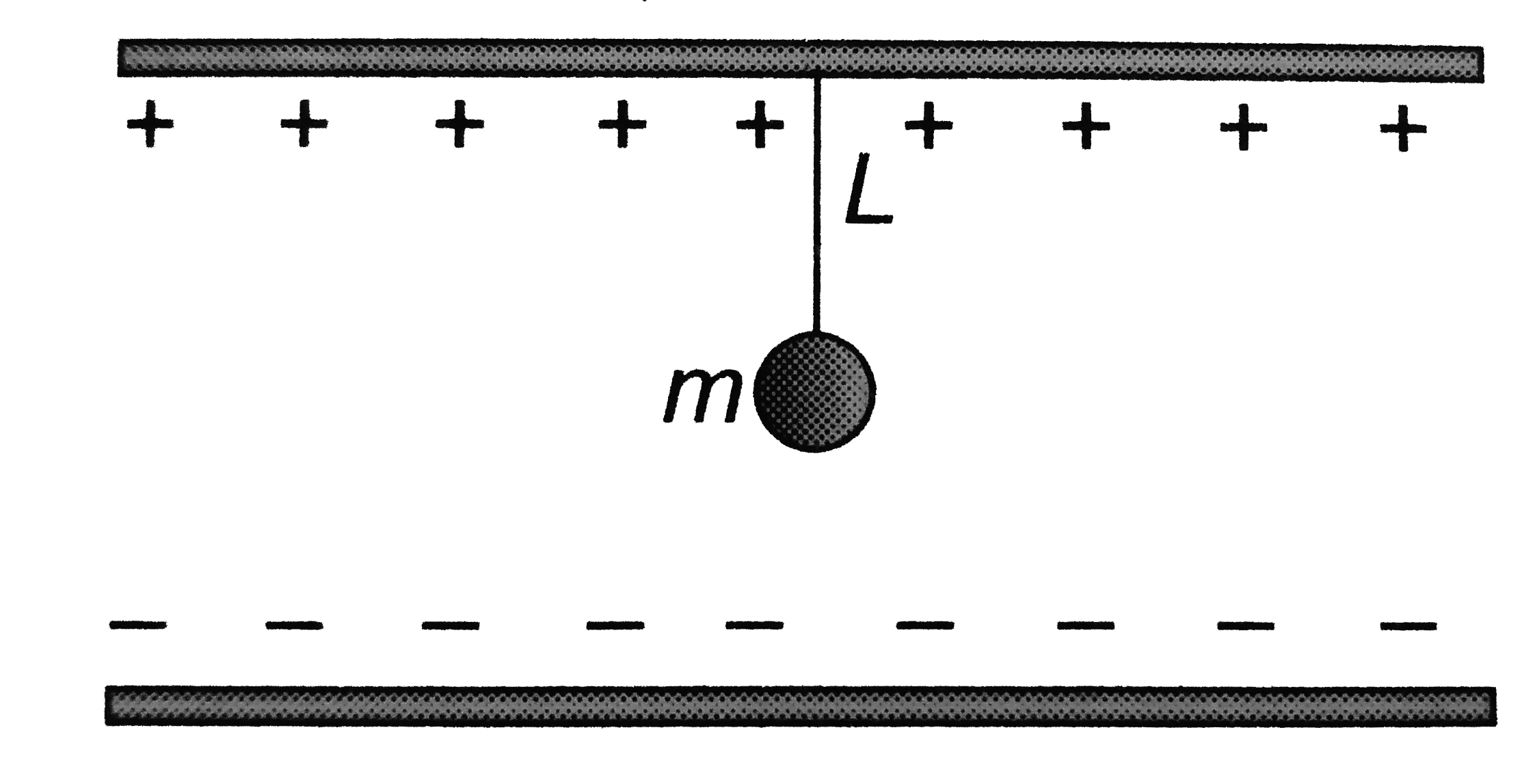
View SolutionAn electric dipole consisting of two opposite charges of `2xx10^(-6)C` each separated by a distance of `3 cm` is placed in an electirc field of `2xx10^(5)N//C`. The maximum torque on the dipole is will be
View SolutionThe electric field in a certain region is acting radially outwards and is given by `E=Ar. A` charge contained in a sphere of radius `'a'` centred at the origin of the field, will given by
View SolutionThe spatial distribution of the electric field due to charges `(A,B)` is shown in figure. Which of the following statements is correct?

View SolutionPoint charges `+4q, -q` are kept on the `x`-axis at points `x=0,x=a` and `X=2a` respectively, then
View SolutionThe figure shows some of the electric field lines corresponding to an electric field. The figure suggests
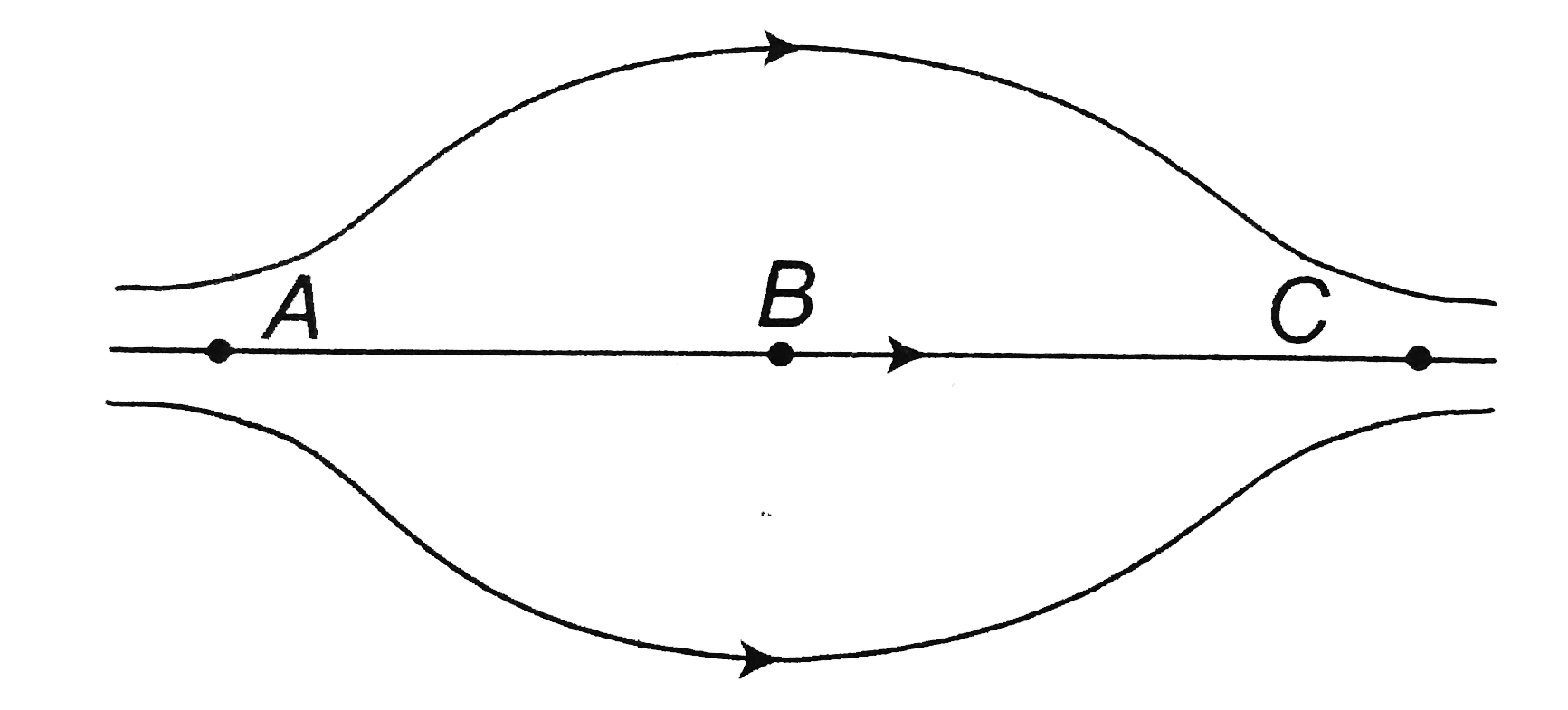
View SolutionFor distance far away from centre of dipole the change in magnitude of electric field with change in distance from the centre of dipole is
View SolutionTwo charge q and `–3q` are placed fixed on x–axis separated by distance d. Where should a third charge` 2q` be placed such that it will not experience any force ?

View SolutionA charge Q is place at each of the opposite corners of a square. A charge q is placed at each of the other two corners. If the net electrical force on Q is zero, then `Q//q` equals:
View SolutionCoulomb 's law correctly describe the electric force is that (pick the wrong statement)
View SolutionAn oil drop of radius r and density r is held stationary in a uniform vertically upwards electric field 'E'. If `p_(0)=(ltp)` is the density of air and e is quanta of charge, then the drop has–
View SolutionA square surface of side `L` metre in the plane of the paper is placed in a uniform electric field `E ("volt"//m)` acting along the same place at an anlge `theta` with the horizontal side of the square as shown in figure. The electric flux linked to the surface in uint of `V-m` is
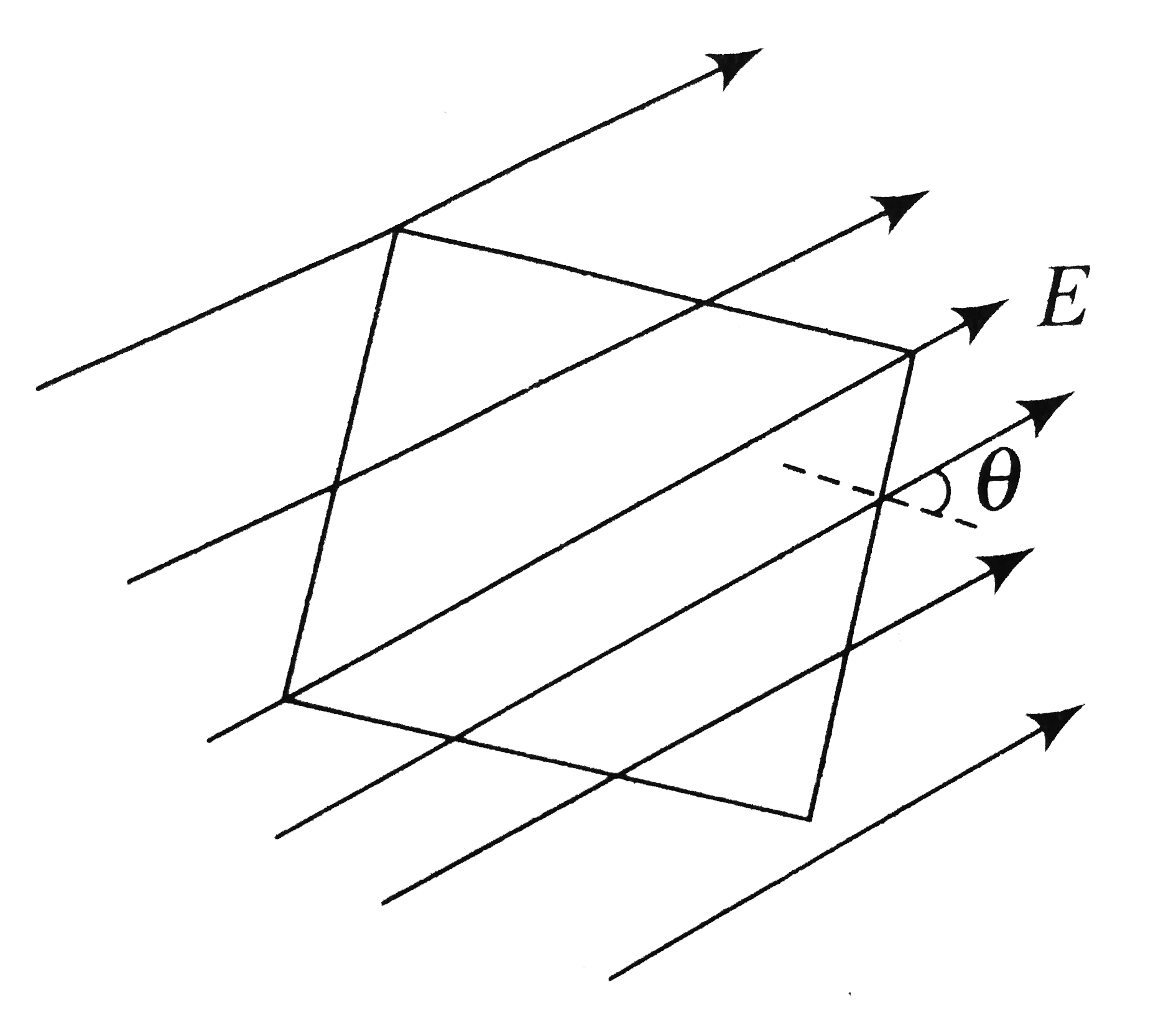
View SolutionAn electric dipole when placed in a uniform electric field `E` will have minimum potential energy, if the positive direction of dipole moment makes the following angle with `E`
View SolutionWhich of the following statements is incorrect?
View SolutionTwo positive ions , each carrying a charge `q` , are separated by a distance `d`.If `F` is the force of repulsion between the ions , the number of electrons missing from each ion will be (`e` being the charge on an electron)
View SolutionThe electric field intensity just sufficient to balance the earth’s gravitational attraction on an electron will be: (given mass and charge of an electron respectively are `9.1xx10^(-31)kg` and `1.xx10^(-19)C)`
View SolutionAn electric dipole is placed at an angle of `30^(@)` with an electric field intensity `2xx10^(5)N//C`. It experiences a torque equal to `4Nm`. The charge on the dipole, if the dipole is length is `2 cm`, is
View SolutionA particle of mass m and charge q is released from rest in uniform electric field of intensity E. Calculate the kinetic energy it attains after moving a distance x between the plates.
View SolutionThree is an electric field E in the x - direction. If the work done by the electric field in moving a charge of `0.2 C` through a distance of `2 m` along a line making an angle `60^(@)` with the x- axis is `4 J`, then what is the value of E ?
View SolutionThere exists a non!-uniform electric field along x-axis as shown in the figure below. The field increases at a uniform rate along +ve x-axis. A dipole is placed inside the field as shown. Which one of the following is correct for the dipole?
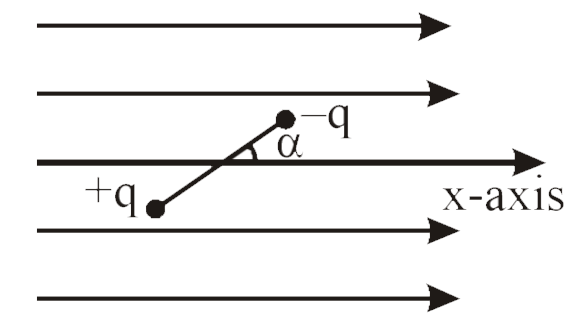
View SolutionA square surface of side `L m` is in the plane of the paper. A uniform electric field `vec(E )(V//m)`, also in the plane of the paper, is limited only to the lower half of the square surface (see figure). The electric flux in `SI` units associated with the surface is:
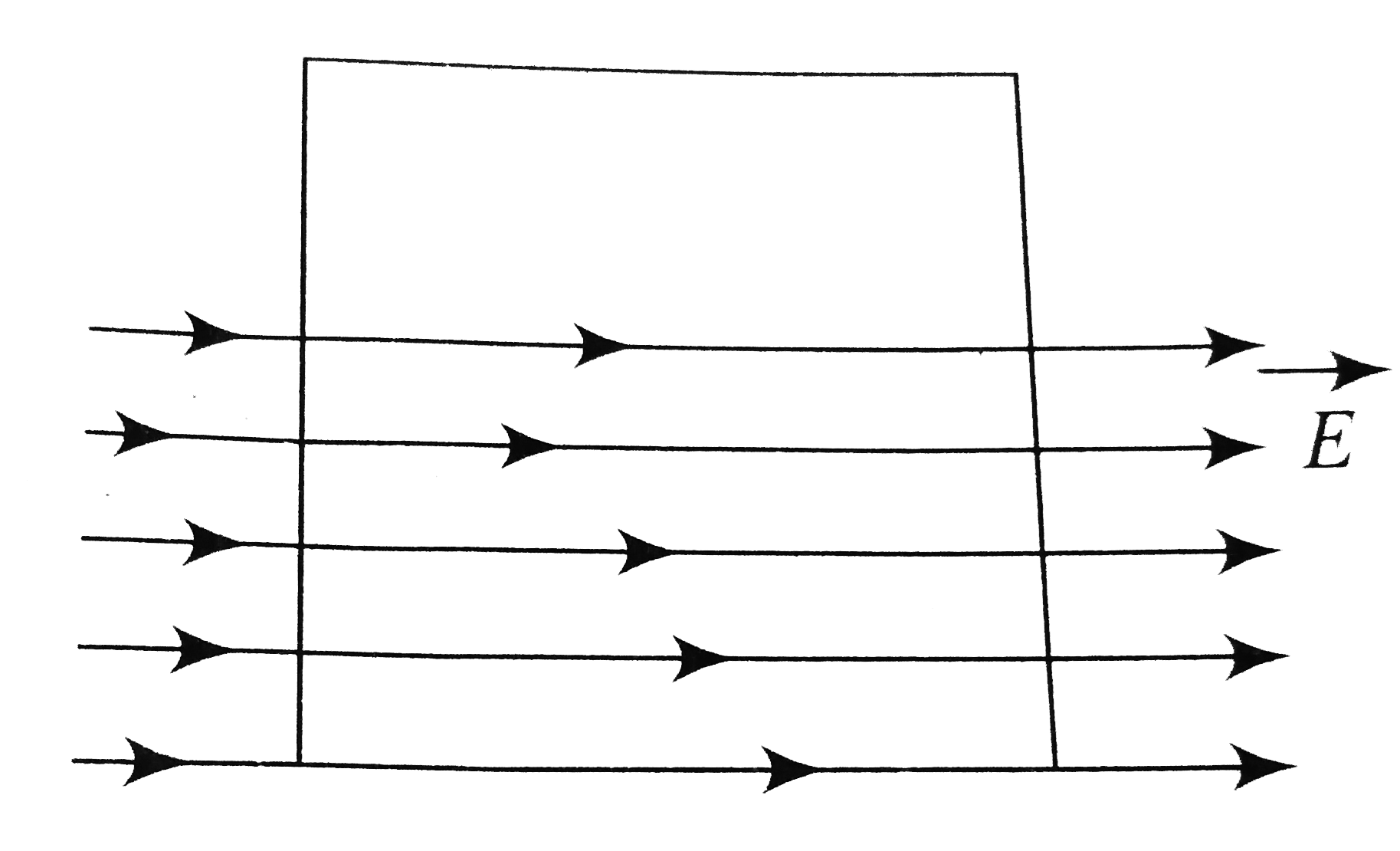
View SolutionAmong two discs A and B, first have radius 10 cm and charge `10^(-6)` -`mu`C and second have radius 30 cm and charge `10^(-5)`- `mu`C. When they are touched, charge on both `q_(A)` and` q_(B)` respectively will, be
View SolutionThe total electric flux emanating from a closed surface enclosing an alpha particale (e = electronic chage) is
View SolutionWhich of the following is a wrong statement?
View SolutionA charge q is placed at the centre of the open end of a cylindrical vessel . The flux of the electric field through the surface of the vessel is
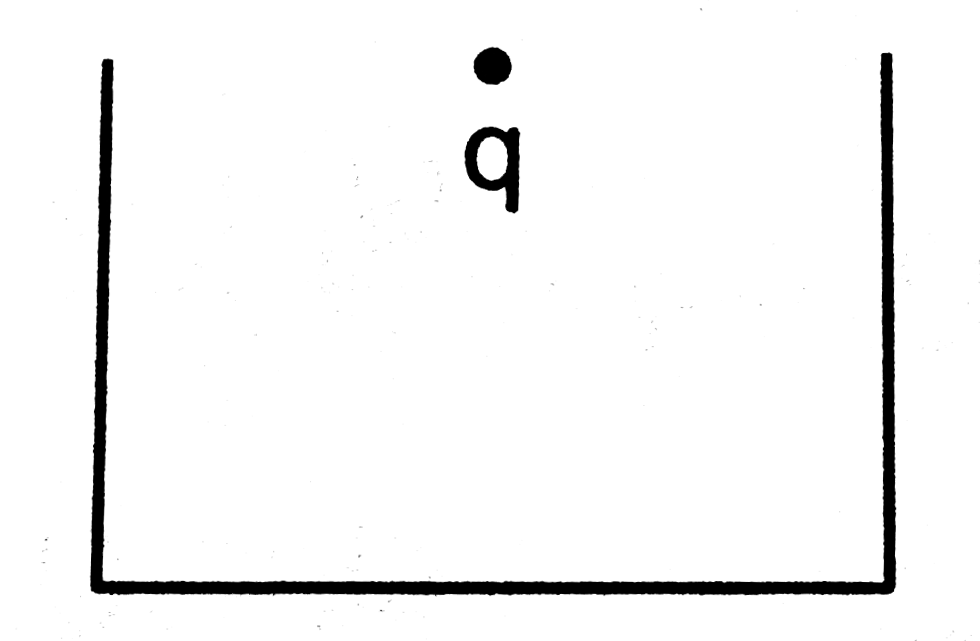
View SolutionTwo particle of equal mass m and charge q are placed at a distance of 16 cm. They do not experience any force. The value of `(q)/(m)` is
View SolutionA rod of length 2.4 m and radius 4.6 mm carries a negative charge of `4.2xx10^(-7)`C spread uniformly over it surface. The electric field near the mid-point of the rod, at a point on its surface is
View SolutionA hollow insulated conducting sphere is given a positive charge of `10 mu C` . What will be the electric field at the centre of the sphere it is radius is `2` metres ?
View SolutionA charge `Q` is enclosed by a Gaussian spherical surface of radius `R`. If the radius is doubled, then the outward electric flux will
View Solution
Physics questions and complete solutions for chapter ELECTRIC CHARGE AND FIELDS of DISHA PHYSICS (HINGLISH) of Class 11